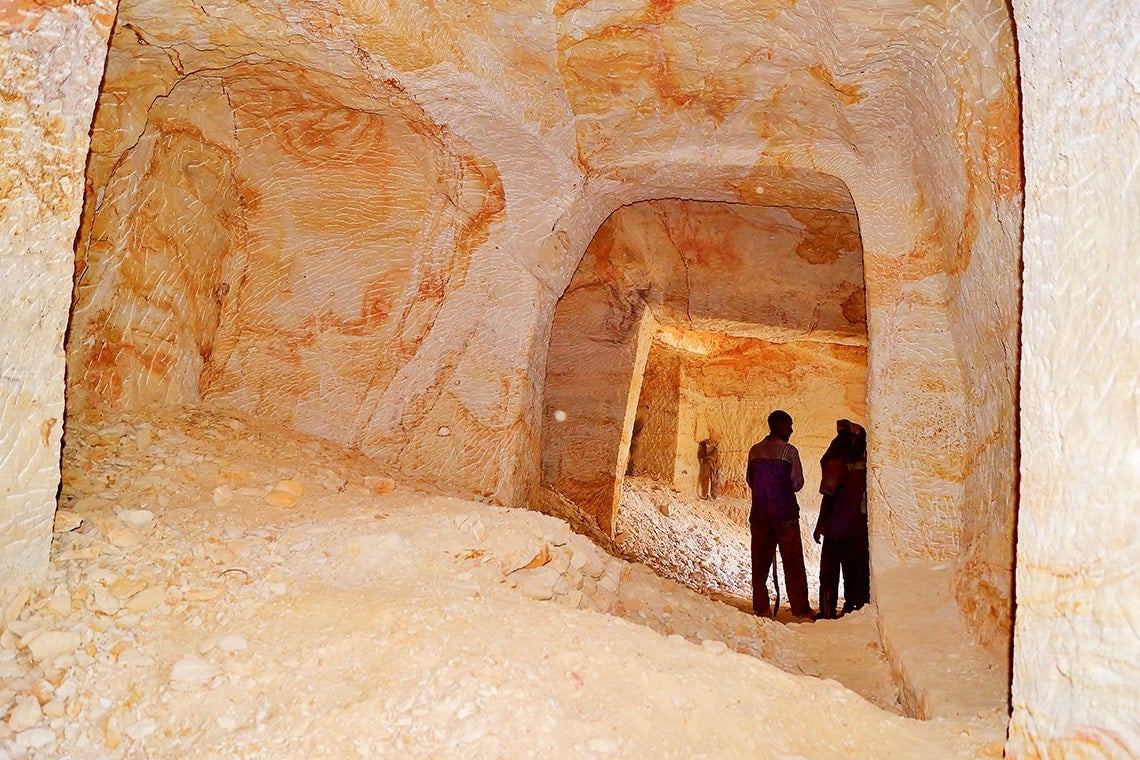Not for the first time, one alert individual disproves the wisdom of the majority of experts. As reported by Don Campbell in U of T News, November 22, 2017 (links in original):
Carving churches out of rock using only a hammer and chisel may seem extraordinary to us, but for those living in rural areas of Ethiopia, it’s simply an expression of faith.
“It’s hard work … literally,” says University of Toronto Professor Michael Gervers, an expert on Ethiopian history.
Gervers, a professor in the department of historical and cultural studies at U of T Scarborough, received a grant in 2015 from the Arcadia Fund to preserve digitally the knowledge and technique of how Ethiopia’s rock-cut churches are made. Since then, he’s travelled to Ethiopia three times and uncovered 20 modern churches across the country.
His work has attracted the attention of descendants of Ethiopian royalty. Last week, Prince Ermias Sahle-Selassie Haile-Selassie, the grandson of the country’s last ruling emperor, awarded Gervers the Grand Cross of the Order of the Star of Ethiopia in recognition of his research.
“I was impressed by his passion and love for the country,” Haile-Selassie says. “It exposes the richness of Ethiopia's culture and traditions, especially in its Christian form, to the world.”
There are hundreds of rock-cut churches scattered throughout Ethiopia, some dating as far back as the 12th century, with a few containing the finest examples of monumental stonework found anywhere in the world. The Church of St. George in Lalibela is one such example. As a world heritage site, it has long been heralded as a national treasure, but many thought the practice of carving churches from rock had all but disappeared 500 years ago. Even scholars of Ethiopian culture didn’t seem to know it was still taking place in remote areas of the country.
“Scholars and government officials didn’t seem to know it was happening. Even some church officials seemed surprised it was taking place,” says Gervers.
Since most of the modern rock-cut churches are being made in rural areas, the only way to find out more is to visit them. Often this involves travelling from village to village, and, once there, asking the craftsmen if they know of others that are being built, notes Gervers.
There’s a very practical reason why churches are carved out of rock in Ethiopia: Sandstone is abundant, a legacy of the country once being entirely covered by the sea. Other building materials like wood, steel and concrete are expensive and hard to come by, especially in rural areas. If done properly, a rock-cut church can also last much longer than a church built of other materials.
“It’s a very practical solution, especially since sandstone is relatively easy to carve compared to other types of stone,” Gervers says.
That’s not to say carving a church out of sandstone is easy. A typical crew using only hammer and chisel will carve out 50 centimetres of rock on a good day. Carving a church 15 metres square by four metres high can take two years of non-stop work, but often progress is slowed by a lack of funds or workers.
What’s even more remarkable is that most of the craftsmen involved have no formal training in carving churches. Many are local day labourers who work on roads or other buildings
What unites them all in building these churches is their faith. “Most of the time you come across a priest, a monk, or even a hermit who has decided that God has called him to carve a church and they start chiselling away,” Gervers says.
The grant has covered three seasons of fieldwork in addition to video recordings and transcriptions of interviews with the craftsmen. The material, a portion of which is already online, will be available for 20 years as part of the grant. Gervers also has an online database of Ethiopian art and culture that contains more than 65,000 images he’s collected over decades of research.
As for what continues to motivate him most about his research, he says it’s as much the physical as the intellectual challenges that come along with it.
“You don’t go to one of these churches in Ethiopia without breaking a sweat,” he says.
Most of the churches are carved into the side of hills or mountains. Gervers has even had to scale down a sheer cliff on a rope to access a church.
“It’s a challenge, but I’m perfectly happy in that environment,” he says. “Other than basic food and water, I don’t crave much in life. What motivates me most is seeing this project through.”
As reported by Liam Casey of Canadian Press, November 21, 2017:
...The web resource is expected to eventually contain hundreds of photographs, transcripts and hours of video interviews about the practice.
At some point, hopefully in the next year, Gervers says his findings will be published in an academic journal. But he also wants to get the word out in an effort to preserve the craft.
In 2014, the Arcadia Fund, a philanthropic foundation known for preserving languages, approached Gervers to see if the craft of hewing churches from rock was still practised, and if so, to document it.
Gervers already had a lead from his trip to Ethiopia in 2007 and began his hunt in 2015. Over the past two years he and a few colleagues in Ethiopia and Europe have been scouring the country looking for evidence.
So far, they’ve found 20 modern-day churches carved from rock, Gervers says.
“There is very little information that these churches are still being built, only those who live near a church know, no one else in Ethiopia really knows,” says Bayenew Melaku, an architect at the Ethiopian Institute of Architecture, Building Construction and City Development at Addis Ababa University, who is working with Gervers on the project.
“It is an endangered heritage because the knowledge is not well exposed and we’re worried this tradition will go extinct.”
It is believed that churches were built out of rock as early as the 12th century, and possibly earlier, Gervers says. They are of two styles: cave and monolithic churches.
Cave churches are essentially cut into the side of a cliff whereas monolithic churches are cut out from the rock, working from the surface digging down to create both the outside and inside of a free-standing structure.
Some of the most famous examples of monolithic churches carved from rock exist in Lalibela, a town in a mountainous region of northern Ethiopia where a complex of rock-cut churches have been designated a UNESCO world heritage site.
But the pilgrims and tourists who flock there should take the three-hour drive across the valley to a spot called Ambager, Gervers says. There they’ll find a hermit working away with a chisel and hammer.
The man, named Gebremeskel Tessema Mola, has withdrawn from society and, inspired by God, has dedicated much of his life to creating a monolithic church complex that so far spans about 35 metres in width and up to seven metres in height, Gervers says.
“He’s an artist because he has this great plan in his mind — he doesn’t seem to have plans on paper — but knows exactly where he’s going,” Gervers says. “It’s incredible how much he accomplishes every year.”
Gervers interviewed Gebremeskel, who goes by his first name, and took a tour of the church the man has slowly been carving out of rock since 1995, discussing the craft at length.
“We had a sense of duty to prove that, by the help of the Holy Spirit, our forefathers really made what they made,” Gebremeskel told Gervers, according to a translated transcript of an interview the professor shared.
“That is why we have been working on this.”
Gervers’ work has also drawn the attention of the grandson of Ethiopia’s last ruling emperor.
“It exposes the richness of Ethiopia’s culture and traditions, especially in its Christian form, to the world,” Prince Ermias Sahle-Selassie Haile-Selassie, president of the Crown Council of Ethiopia, said in a statement.
Gervers headed back to Ethiopia on Tuesday to continue to his work.







































No comments:
Post a Comment